Profiles in Leadership / Women in Immunology
Rebecca Lancefield: PI in the Scotland Yard of Streptococcal Mysteries
by John S. Emrich and Bryan Peery
March/April 2013
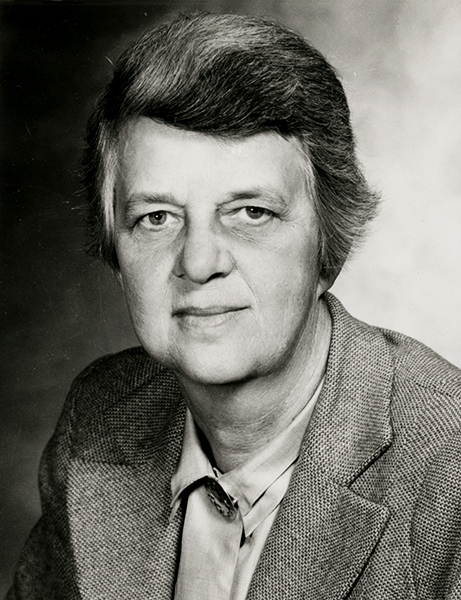 Rebecca C. Lancefield, 1961
Rebecca C. Lancefield, 1961
AAI Collection, UMBCAmong early members of the American Association of Immunologists (AAI), few left a more enduring legacy than that of Rebecca Craighill Lancefield. A world-renowned authority on streptococcal bacteria, Lancefield developed the classification system of streptococcus bearing her name and still in use today. Her identification of streptococcal types proved essential to revealing the complexities of the immune response to the bacteria and elucidating streptococci as the primary infectious agent for many diseases—understandings that enabled improved methods for identifying and controlling streptococcal infections. Recognized broadly for her outstanding scientific achievements, Lancefield, in 1961, was elected by her peers to serve as president of AAI, becoming the first woman elected to this office.
Lancefield’s distinguished career path was all the more remarkable for having been an indirect one. A number of changes in her life could have diverted her progress, but, at each juncture, she turned perceived interruptions into opportunities.
Early education
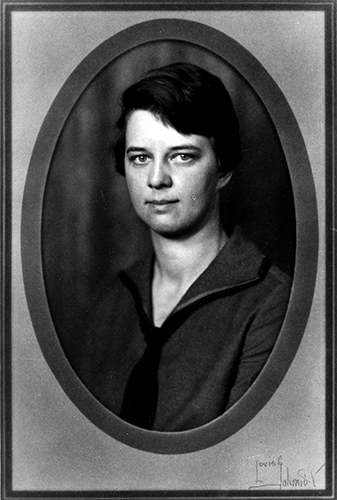 Rebecca Craighill, 1914
Rebecca Craighill, 1914
Rockefeller Archive CenterRebecca Craighill was born in Fort Wadsworth, Staten Island, New York, on January 5, 1895, one of six daughters of Colonel William Craighill, U.S. Army Corps of Engineers. A West Point graduate, William married the sister of one of his classmates, Mary Byram Craighill. Mary, an early proponent of female education, encouraged her daughters to devote themselves to their schooling—and with good results. In addition to Rebecca’s successful research career, one of Rebecca’s sisters became an accomplished.
In the fall of 1912, Rebecca entered Wellesley College with the intention of studying French and English literature. She soon became fascinated by her roommate’s freshman zoology course, however, and changed her major to zoology. She attacked the subject zealously, taking as many additional courses in biology, including bacteriology, and chemistry as she could while meeting the requirements for graduation.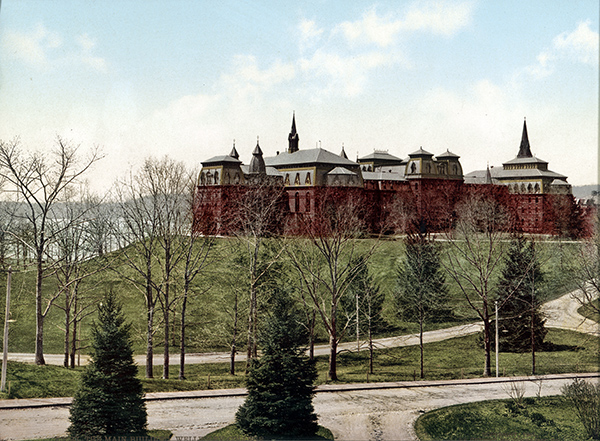 Wellesley College, 1901
Wellesley College, 1901
Library of Congress
By the time of her college graduation in 1916, her father had died, and the family was in financial straits. To help support her mother and younger sisters, she spent her first year out of college teaching mathematics and basic science at a girls’ boarding school in Burlington, Vermont. Even as she sent money home, Rebecca managed to put aside a bit toward tuition for further studies.
In the fall of 1917, she was able to combine her meager savings with a scholarship from the Daughters of Cincinnati for daughters of Army and Navy officers. The scholarship was to help her attend Teachers College, Columbia University, preparing for the conventional occupation of the time for educated, unmarried women. The scholarship, however, did not specify that Rebecca must take her classes at Teachers College, only that she should matriculate there, and so, she took the liberty of enrolling in courses in the Department of Bacteriology at Columbia’s College of Physicians and Surgeons (P&S).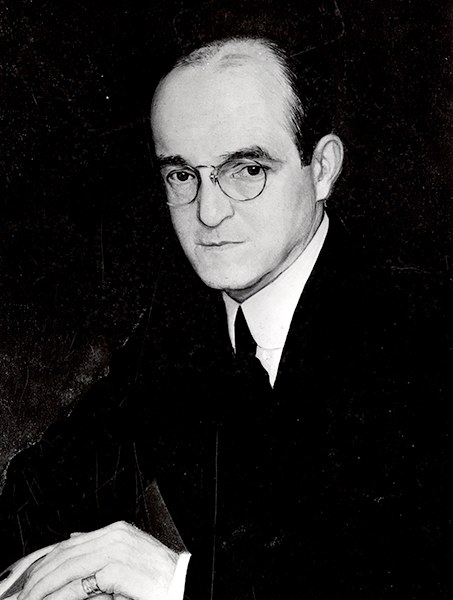 Oswald Avery, c. 1929
Oswald Avery, c. 1929
AAI Collection, UMBC
Although she was entering the field obliquely, she was beginning her graduate studies in a rarified environment. At the P&S, she entered the department of prominent immunologist and bacteriologist Hans Zinsser (AAI 1917, president 1919–20), although, at the time of her arrival, he was stationed in France as part of the U.S. Army Medical Corps. Aware that students in Zinsser’s lab were expected “to spend all of their waking hours in class or in the laboratory,” Rebecca spent much time in the laboratory at Presbyterian Hospital, typing strains of pneumococci from patients. In addition to her classes, she was encouraged to attend other lectures by distinguished New York scientists. Rebecca was particularly impressed by a lecture given by Oswald Avery (AAI 1920, president 1929–30) on the lag phase of pneumococcal cultures. Upon reading Avery’s 1917 articles on the specific soluble substance of pneumococcus, she decided to look for an analogue in staphylococcus. She now had the topic for her thesis, which she succeeded in completing that same year.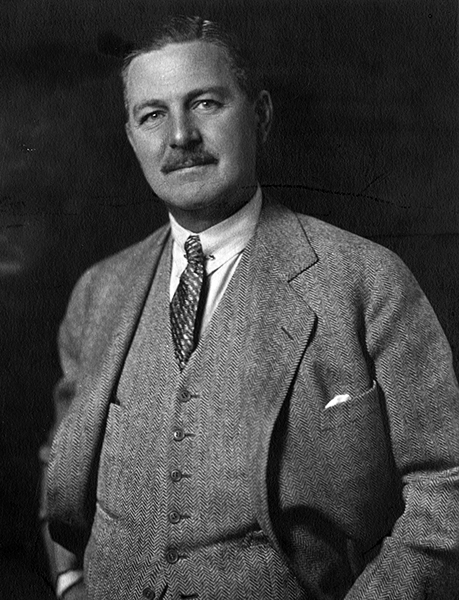 Alphonse R. Dochez, c. 1931
Alphonse R. Dochez, c. 1931
AAI Collection, UMBC
In the spring of 1918, she graduated from Columbia with an M.A., married Donald Lancefield, a zoology graduate student in the laboratory of eminent geneticist Thomas Hunt Morgan at Columbia, and applied for a position at the Rockefeller Institute for Medical Research (RIMR). With her degree in hand, she interviewed with the director, Simon Flexner (AAI 1920), who hired her as a technician for Martha Wollstein (AAI 1918), who had previously worked closely with Flexner on early experimental polio research and Pfeiffer’s bacillus. But Wollstein soon left RIMR to carry out research on the influenza pandemic, and Flexner suggested that Alphonse R. Dochez (AAI 1920, president 1931–32) may have use for Lancefield in his ongoing research under a U.S. Army grant to study streptococcal infections at military bases. She interviewed with Dochez and with Avery, a collaborator on the project, and was quickly taken on as their laboratory technician.
Oswald Avery and the techniques of classification
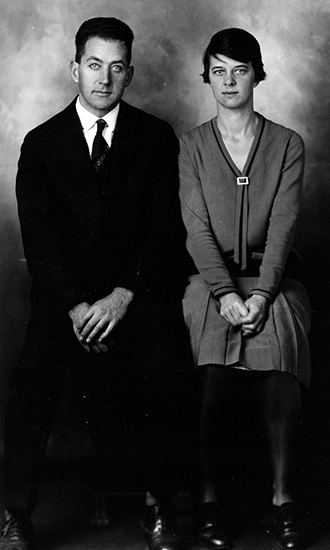 Rebecca and Donald Lancefield, 1928
Rebecca and Donald Lancefield, 1928
Rockefeller Archive CenterLancefield’s arrival at RIMR in the summer of 1918 occurred just as two transformative events began to change the direction of research for many scientists, including Avery and Dochez. The United States had begun sending troops to the European front for the First World War, and the1918 influenza pandemic was sweeping the nation. The previous winter, Avery and Dochez had been asked by U.S. Surgeon General William C. Gorgas to put their studies of pneumococcus on hold to consult on a serious outbreak of measles and streptococcal infections at military camps in Texas. It was this shift in focus for Avery and Dochez that led Lancefield to the study of streptococcus, the organism that would command her attention throughout her career.
Avery and Dochez collected samples of streptococci from the camps in Texas for further study in their New York laboratory. At that time, streptococci had not been classified and were widely believed to be the causative agent of secondary infections, such as pneumonia, puerperal fever, rheumatic fever, and wound infections, which typically followed measles and influenza. Avery and Dochez had been enlisted precisely because of their success in classifying four types of pneumococci, as well as for their clinical understanding of the disease. The researchers sought to determine whether streptococci, like pneumococci and some other bacteria, were comprised of only one or several distinct types.
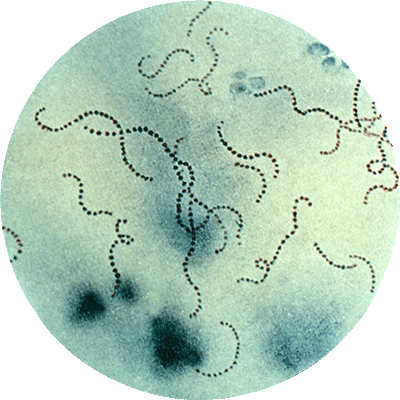 Streptococcus
Streptococcus
Centers for Disease Control and PreventionShortly before Lancefield joined their laboratory, Dochez and Avery described their frustration with typing their samples from Texas at an early June 1918 Rockefeller conference on hemolytic streptococci. They indicated that they still did not know whether they were dealing with distinct strains, citing problems with both agglutination and mouse protection. Dochez explained to those in attendance that, “[u]p to now…we have been unable to obtain immune serum which affords any considerable degree of protection for white mice against experimental infection. We are still working along this line and it is possible that the proper combination of immune serum and test animal may be obtained.”
Lancefield assisted Avery and Dochez in the laboratory with their typing problem. Within one year, the lab had classified 70 percent of the 125 samples they had collected in Texas into four distinct serological types of streptococcus. Lancefield’s role in this process was, no doubt, significant. Avery and Dochez cited her as a coauthor in the resulting article, “Studies on the Biology of Streptococcus: I. Antigenic Relationships Between Strains of Streptococcus hemolyticus.”
A slight diversion
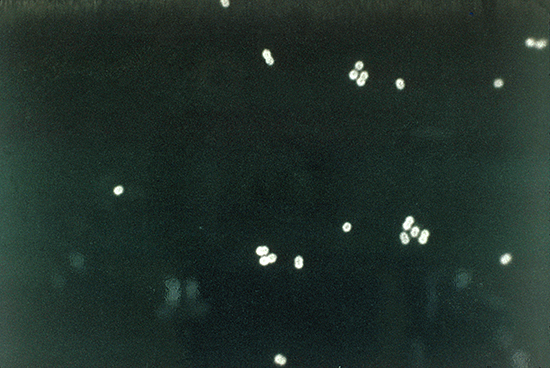 Pneumococcus
Pneumococcus
Centers for Disease Control and PreventionShortly after their results were published, funding for the Army-supported streptococcal project ceased with the war’s end, and Dochez and Avery gladly returned to their pneumococcal research. Dochez accepted a position at Johns Hopkins University, and Lancefield, no longer funded at RIMR, accompanied her husband and the Columbia zoology group to their annual summer trip to the Marine Biological Laboratory at Woods Hole, Massachusetts. While there, Lancefield met Morgan and was hired to work as a technician in his lab at Columbia University. She worked there for two years on a Drosophila genetics study under Charles W. Metz. Taking advantage of the access her employment at Columbia provided her, she took Morgan’s genetic course as well as the pioneering cytology course taught by notable cell biologist Edmund B. Wilson.
When, in 1921, her husband, Donald, was offered the opportunity to teach zoology at the University of Oregon, both Lancefields made the move. For Donald, it was a homecoming to a state that his mother had entered aboard a covered wagon at the age of ten. Rebecca was also able to secure an appointment teaching bacteriology. The homecoming was short-lived, though, for, at the end of the school year, Donald accepted an offer to join Morgan’s Department of Zoology at Columbia University. The Lancefields returned to New York where Rebecca seized the opportunity to begin her doctoral training in bacteriology under Zinsser at Columbia.
Return to streptococcus
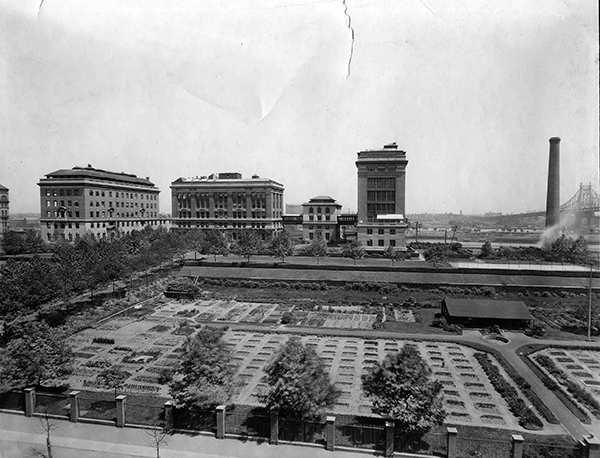 Rockefeller Institute for Medical Research, 1925
Rockefeller Institute for Medical Research, 1925
Rockefeller Archive CenterLancefield returned to working on streptococcus, not only at Columbia but also at RIMR. Zinsser was not fond of women in the laboratory and was quick to recommend that Rebecca find laboratory space at RIMR with Homer Swift (AAI ’20), who was beginning a new study of rheumatic fever. Lancefield obtained a position under Swift, an arrangement that she later recalled required her to carry “my racks of test tubes back and forth between the two labs” during these years.
At the time, the causative agent of rheumatic fever was unknown, and Swift and Lancefield’s first study attempted to isolate the “specific soluble substance”—polysaccharides, such as those being identified on pneumococcus, or other antigens—species specific for streptococci. When this study proved inconclusive, Swift next suspected that the α-hemolytic class of streptococcus (also called “green” or viridans streptococci) was the causative agent. Lancefield’s doctoral research consisted of testing this hypothesis. After two years of painstaking laboratory work, she had proved conclusively that the α-hemolytic streptococci were not responsible for rheumatic fever, and she had earned her Ph.D.
After completing her doctorate in bacteriology in 1925, Lancefield returned to her research on hemolytic streptococci at RIMR by returning to a more basic approach to understanding which classes of streptococci caused diseases in humans. Although Dochez, Avery, and she had identified four distinct serological types in 1919, there had been little research on understanding the determining chemical and biological properties of the antigens on the surface of the bacteria that were responsible for the virulence and pathogenesis of many of the now-known streptococcal infections, such as strep throat, scarlet fever, rheumatic fever, and mastitis.
Developing a classification system
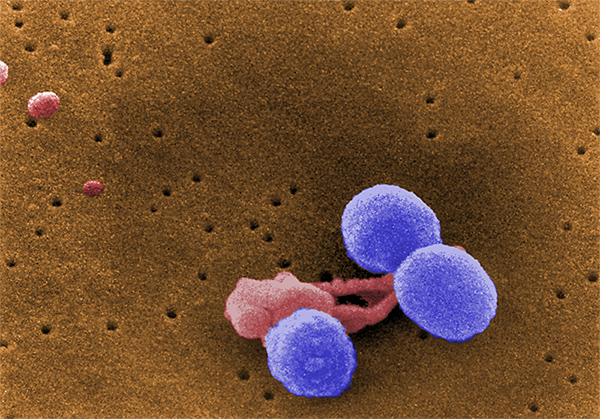 Streptococcus pneumonia
Streptococcus pneumonia
Centers for Disease Control and PreventionHaving been immersed in Avery’s methodology, Lancefield adopted many of the typing techniques she had used for typing pneumococci. She began her research by resurrecting the 125 dried streptococcal cultures collected by Dochez and Avery in Texas. She soon began to make progress in classifying β-hemolytic streptococci through her laborious and detailed serological grouping and typing. But, the classification system that she was beginning to develop was not her ultimate objective. Instead, it was a means to her goal of identifying the antigens and determining their role in the pathogenic capability of the bacteria.
In a series of articles in 1923, Avery and Michael Heidelberger (AAI 1935, president 1946–47, 1948–49) demonstrated that type-specific antigens in pneumococcus were composed of polysaccharides. Their conclusions were verified subsequently by other researchers, who also identified similar capsular polysaccharides on pathogenic bacteria determining type specificity. In the mid-1930s, Lancefield isolated two soluble surface antigens from streptococci. The first was type-specific for the various strains of the 1918 epidemic, and the second was species-specific, present in all of the strains taken from infected humans. Lancefield, working just down the hall from Avery, expected to find that the type-specific antigens of streptococci were also composed of complex carbohydrates.
In further experimentation, she was surprised to discover that the type-specific antigen was a protein. She identified the protein and later called it the M-protein, in reference to the growth of a matt colony when the bacteria sample is exposed to the antigen on an agar medium. She further concluded that this protein was responsible for the virulence factor of streptococci.
The species-specific antigen, however, was comprised of carbohydrates, which she called the C-carbohydrate. After receiving and testing streptococcal strains from human and animal subjects across the country, she soon realized that the antigen she believed to be species-specific was actually group-specific. This differentiation in group provided the basis for her classification system and the study of streptococcal diseases. Lancefield did not publish her results as the M-protein and C-carbohydrate discoveries were made. She did, however, author a series of five articles in 1928 reporting these discoveries.
She soon began to differentiate and classify her samples, separating them into groups and specific serotypes within each group based on variations in the M-protein and C-carbohydrate. Initially, she designated group A for highly virulent streptococcal infections in humans and group B largely for bovine streptococcal infections. By 1940, Lancefield and other researchers were refining the classification system to the extent that Lancefield had defined, or been consulted about, groups A through H and K (later dropped), L, and M.
Research after classification
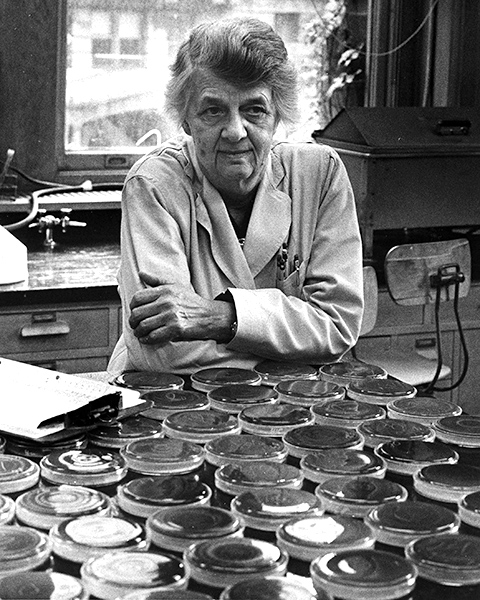 Rebecca Lancefield in her laboratory
Rebecca Lancefield in her laboratory
Rockefeller Archive CenterThrough her careful studies of group A streptococci, she classified over 50 types and revealed that the M-protein played a central role in streptococcal infections by inhibiting the phagocytosis of white blood cells. She also discovered that a single serotype could cause a variety of streptococcal diseases and that the M-protein varied across serotypes, a conclusion revealing that immunity from one type of streptococcal infection does not prevent infection by streptococcus of another serotype. This latter discovery explained why streptococcal infections, such as strep throat and rheumatic fever, are so often recurring. She also identified two new surface proteins on group A streptococci: T-antigen in 1940, which she later determined, in 1957, meant that the new antigen did not contribute to virulence, and R-antigen.
Lancefield later turned her attention to group B streptococci—bacteria once thought to infect only bovine but soon discovered to be responsible for neonatal pneumonia and meningitis. Lancefield found that streptococci of this group did not contain the M-protein; instead, she found that their virulence was determined by surface polysaccharides. Her research was an important first step in preventing the life-threatening diseases in newborns caused by group B streptococci.
Career at Rockefeller
For nearly six decades, Mrs. L., as she became affectionately known to her colleagues, left her mark on RIMR and on immunology. During the Second World War, she served on the Commission on Streptococcal and Staphylococcal Diseases of the Armed Forces Epidemiological Board, and her willingness to answer queries and type streptococcal samples from around the country, and later from around the world, earned her laboratory at RIMR the nickname, “the Scotland Yard of streptococcal mysteries.” After the war, in 1946, she was promoted to an associate member at RIMR and became a full member and professor in 1958.
Lancefield’s years at Rockefeller not only allowed her to work under such early luminaries in the field as Avery, Dochez, and Swift, but they also afforded her the opportunity to collaborate with and influence subsequent generations of immunologists: she was a long-time colleague and collaborator of Maclyn McCarty (AAI 1947), who replaced Swift upon his retirement, and she served as a mentor to Emil Gotschlich (AAI 1969). Both McCarty and Gotschlich were recipients of Lasker Awards. In 1965, Lancefield became professor emeritus but continued to work in her old laboratory until she suffered a broken hip in a November 1980 fall. She died on March 3, 1981, at the age of 86.
Legacy
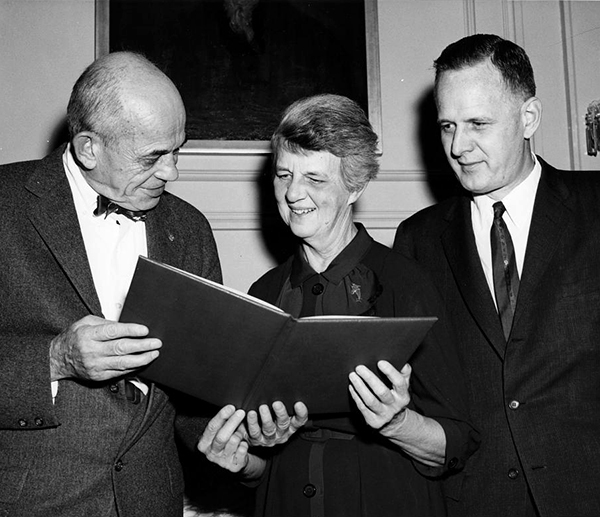 Rebecca Lancefield accepting the T. Duckett Jones Memorial Award, 1960
Rebecca Lancefield accepting the T. Duckett Jones Memorial Award, 1960
Smithsonian Institution ArchiveToward the end of her career, Lancefield received numerous honors and awards thought by many to be long overdue. She was elected to the National Academy of Sciences (1970), which, by that time, had elected only ten women, and was awarded the T. Duckett Jones Memorial Award of the Whitney Foundation (1960), the American Heart Association Achievement Award (1964), the New York Academy of Medicine Medal (1973), and a Doctor of Science (honoris causa; 1973), the highest recognition from Rockefeller. Perhaps the most significant honor bestowed upon her was the decision of both the national and international organizations devoted to the study of streptococcus to adopt the name, “The Lancefield Society,” in 1972 and 1977, respectively.
Lancefield was an internationally renowned research scientist, but she was also a devoted wife and mother. (She and Donald had one daughter, Jane.) Her success in balancing career and family was rare among female immunologists in the first half of the twentieth century, but she seems not to have wanted emphasis to fall on her role as a pioneering woman in science. According to a colleague, she did not relish “honors that recognized her as the ‘first woman’ to do this or that and preferred those that came without reference to her sex.”
Far more satisfying for her, one imagines, would be Maclyn McCarty’s tribute, crediting her as “the scientist most responsible for the well-organized state of our present knowledge of streptococci.”
References
- Altman, Lawrence K. “Dr. R. C. Lancefield, Bacteriologist, Dies.” New York Times. March 4, 1981.
- Barry, John M. The Great Influenza: The Epic Story of the Deadliest Plague in History. New York: Penguin, 2005.
- Chase, Merrill W. “Rebecca C. Lancefield: Luncheon 3/6/75.” American Association of Immunologists Records, Box 8, Folder 43, University of Maryland, Baltimore County.
- Dochez, Alphonse R., Oswald T. Avery. “Soluble Substance of Pneumococcus Origin in the Blood and Urine During Lobar Pneumonia.” Experimental Biology and Medicine 14, no. 6 (1917): 126–127.
- Dochez, Alphonse R., Oswald T. Avery. “The Elaboration of Specific Soluble Substance by Pneumococcus During Growth.” Journal of Experimental Medicine 26, no. 4 (1917): 477–493.
- Dochez, Alphonse R., Oswald T. Avery. “The Elaboration of Specific Soluble Substance by Pneumococcus During Growth.” Transactions of the Association of American Physicians 32 (1917): 281–298.
- Dochez, Alphonse R., Oswald T. Avery, and Rebecca C. Lancefield. “Studies on the Biology of Streptococcus: I. Antigenic Relationships Between Strains of Streptococcus hemolyticus.” Journal of Experimental Medicine 30, no. 3 (1919): 179–213.
- Lancefield, Rebecca. “The Immunological Relationships of Streptococcus viridans and Certain of Its Chemical Fractions: I. Serological Reactions Obtained with Antibacterial Sera.” Journal of Experimental Medicine 42, no. 3 (1925): 377–395.
- Lancefield, Rebecca. “The Immunological Relationships of Streptococcus viridans and Certain of Its Chemical Fractions: II. Serological Reactions Obtained with Antinucleoprotein Sera.” Journal of Experimental Medicine 42, no. 3 (1925): 397–412.
- Lancefield, Rebecca. “The Antigenic Complex of Streptococcus haemolyticus. I. Demonstration of a Type-Specific Substance in Extracts of Streptococcus haemolyticus.” Journal of Experimental Medicine 47, no. 1 (1928): 91–103.
- Lancefield, Rebecca. “The Antigenic Complex of Streptococcus haemolyticus. II. Chemical and Immunological Properties of the Protein Fractions.” Journal of Experimental Medicine 47 (1928): 469–480.
- Lancefield, Rebecca. “The Antigenic Complex of Streptococcus haemolyticus. III. Chemical and Immunological Properties of the Species-Specific Substance.” Journal of Experimental Medicine 47, no. 3 (1928): 481–491.
- Lancefield, Rebecca. “The Antigenic Complex of Streptococcus haemolyticus. IV. Anaphylaxis with Two Non-Type-Specific Fractions.” Journal of Experimental Medicine 47, no. 6 (1928): 843–855.
- Lancefield, Rebecca. “The Antigenic Complex of Streptococcus haemolyticus. V. Anaphylaxis with the Type-Specific Substance.” Journal of Experimental Medicine 47, no. 6 (1928): 857–875.
- Lancefield, Rebecca. “A Serological Differentiation of Human and Other Groups of Hemolytic Streptococci.” Journal of Experimental Medicine 57, no. 4 (1933): 571–595.
- Lancefield, Rebecca. “A Serological Differentiation of Specific Types of Bovine Hemolytic Streptococci.” Journal of Experimental Medicine 59, no. 4 (1934): 441–458.
- Lancefield, Rebecca. “Type-Specific Antigens, M and T, of Matt and Glossy Variants of Group A Hemolytic Streptococci.” Journal of Experimental Medicine 71, no. 4 (1940): 521–537.
- Lancefield, Rebecca. “Differentiation of Group A Streptococci with a Common R Antigen into Three Serological Types, with Special Reference to the Bactericidal Test.” Journal of Experimental Medicine 106, no. 4 (1957): 525–544.
- Lancefield, Rebecca and E. W. Todd. “Variants of Hemolytic Streptococci; Their Relation to Type-Specific Substance, Virulence, and Toxin.” Journal of Experimental Medicine 48, no. 6 (1928): 751–767.
- Lancefield, Rebecca and E. W. Todd. “Antigenic Differences Between Matt Hemolytic Streptococci and Their Glossy Variants.” Journal of Experimental Medicine 48, no. 6 (1928): 769–790.
- McCarty, Maclyn. “Rebecca Craighill Lancefield, 1895–1981.” in Biographical Memoirs. Washington, DC: National Academy of Sciences, 1987: 227–246.
- O’Hern, Elizabeth M. “Rebecca Craighill Lancefield, Pioneer Microbiologist.” ASM News 41, no. 12 (1975): 805–810.
- Schwartz, Judith N. “Mrs. L.,” The Rockefeller University Research Profiles. (Summer 1990). https://digitalcommons.rockefeller.edu/research_profiles/35 (accessed July 25, 2018).
- “Emil C. Gotschlich.” Rockefeller University. https://www.rockefeller.edu/our-scientists/emeritus-faculty/937-emil-c-gotschlich (accessed 25 July 2018).